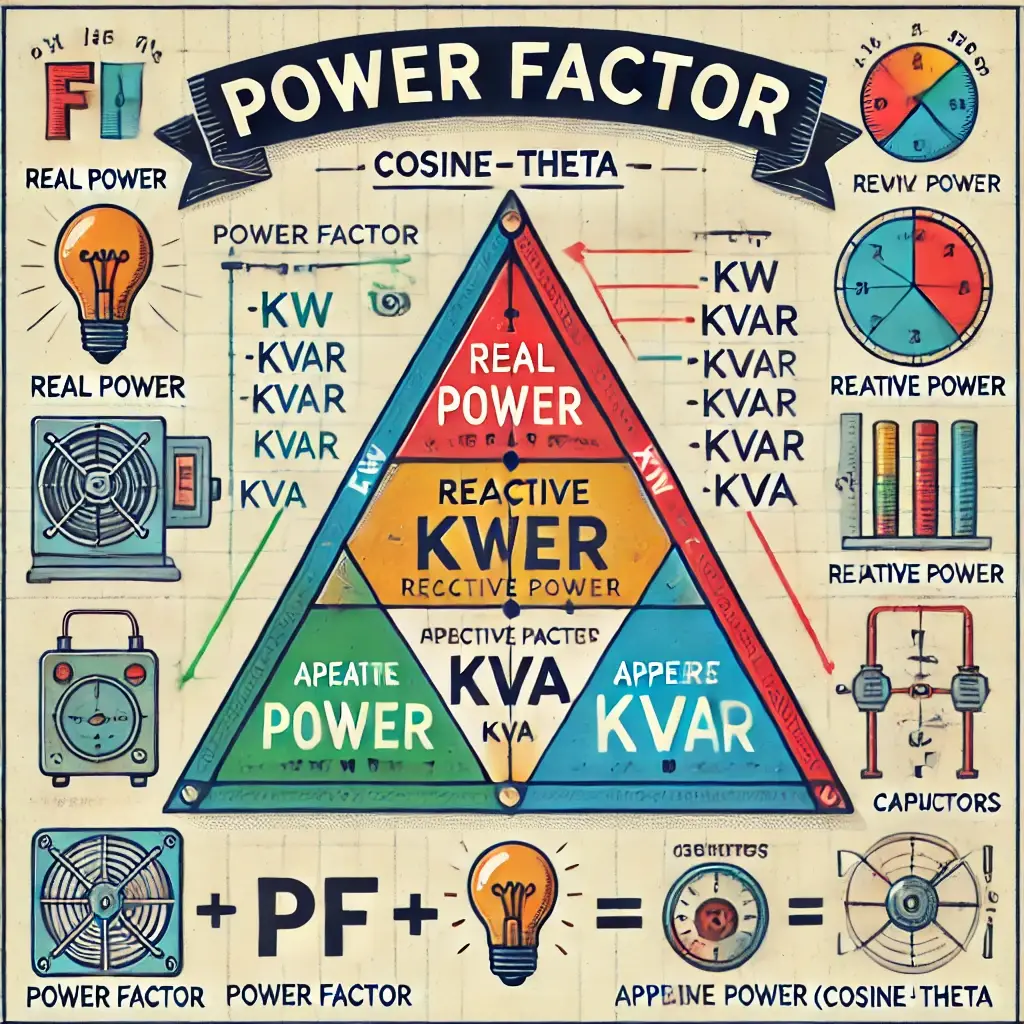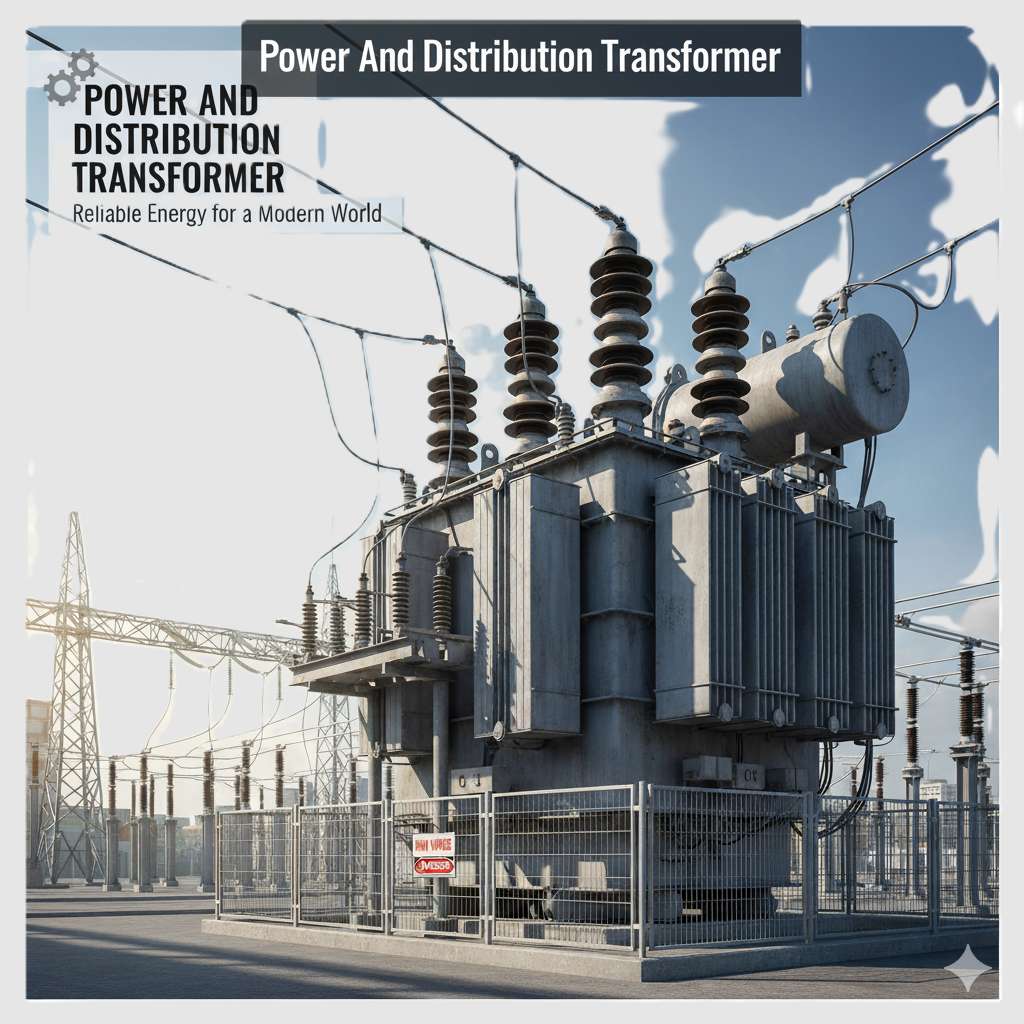Table of Contents
Basic Alternator Working Principle:
WHAT IS ALTERNATOR?
Alternating current generators are usually called alternators. They operate on the principle of
Faraday’s laws of electromagnetic induction. This law states that whenever a conductor cuts the magnetic
flux an emf is induced in it. This emf causes a current to flow if the circuit is closed. Fig 1.1 shows a
simple alternator

When a single turn coil rotates in a magnetic field at uniform speed, an emf is induced in it. These
ends of the coil are connected to two slip rings. The induced emf can be tapped from the brushes. If the
circuit is closed, a current flow through the circuit. This is the function of a simple alternator.
shows a coil rotating in clockwise direction. when the coli rotates in the field, the flux
linked with it changes, thus an emf is induced. Which is proportional to the rate of change of flux linkage.
At position 1, (where θ = 00) the plane of the coil is at right angles to flux line, and the rate of change of
flux linkages is minimum. In this position there is no induced emf in the coil.

When the coil continuous rotating in the clockwise direction, the rate of change of flux linkage
increases. At position 3 (where θ = 900) the flux linked with the coil is minimum, but the rate of change of
flux linkages is maximum.

In the next quarter revolution from position 3 to position 5 (900 to 1800 ) the flux linked with the
coil gradually increases. But the rate of change of flux linkages decreases. Hence the induced emf is
decreased gradually. At position 5 the emf is reduced to zero volt.
In the next half revolution, from position 5 to position 7 ( 1800 to 3600) the emf induced in the
coil is in reverse direction. At position 7, negative maximum emf is induced and at position 1, minimum
emf is induced. Thus an A.C emf is induced in the coil

Requirement of an Alternators
As per the Faraday’s laws of electromagnetic induction, “whenever magnetic field is cut by a
conductor an emf is induced.” Hence to produce emf, the following are required.
- Magnetic field
- Conductor
- Relative motion between magnetic field and conductor
Conductors are housed in the armature slots.
Types of alternators:
To generate emf any one of the following methods may be used.
- Stationary filed system with rotating armature
- Stationary armature with rotating filed system
Revolving –armature type alternators
- It has stationary field poles and revolving armature
2. It is usually of relatively small KVA capacity and low-voltage rating. It resembles a D.C
generator in general appearance except that it has slip-rings instead of a commutator. The
field current must be direct current and therefore, must be supplied from an external
direct current source.
Revolving –field type alternators
- It has a stationary armature or stator, inside of which the field poles rotate
2. Most alternators are of the revolving–field type, in which the ‘revolving–field structure’
or ‘rotor’ has slip rings and brushes to supply the excitation current from on outside D.C
source. The armature coils are placed in slots in a laminated core, called ‘stator’, which is
made up thin steel punching or laminations securely clamped and held in place and the
The amount of power delivered to the field circuit is relatively small.
Advantages of stationary armature with rotating field systems:
- For rotating field system, two slip rings are sufficient
- Field voltage will be 110V / 220V /400V/1100V d.c. Hence, slip rings are easily insulated.
- Current in the field system will be low. Hence, sparking in brushes will be less.
- Field system is comparatively light weight. Hence, it can rotate fast.
- For stationary armature conductors, coils can be easily placed in position.
- Armature volts will be in the order of 440V, 3300V, 6600V ,11000V,22000V and 33000V
Insulation of such voltage is easy in stationary armature conductors.- Being stationary armature conductors, there is no need for 3 or 4 slip rings.
- Being stationary armature conductors, output current can be easily collected from the fixed
terminals.- Armature system is of heavy weight. Hence, it is better to have stationary armature conductors.
Construction details of alternators

The main components of the synchronous alternator are the following
(a) Stator or armature
(b) Rotor or field magnet
Stator frame and stator core
The stator is a stationary armature. This consists of a core and the slots to hold the armature winding
similar to the armature of a d.c. generator. The stator core uses a laminated construction. It is built up of
special steel stampings insulated from each other with varnish or paper. The laminated construction is
basically to keep down eddy current losses. Generally choice of material is steel to keep down hysteresis
losses.

Section of an alternator stator
The entire core is fabricated in a frame made of steel plates. The core has slots on its periphery
for housing the armature conductors. Frame does not carry any flux and serves as the support to the core.
Ventilation is maintained with the help of holes cast in the frame. The section of an alternators stator is
shown in the Fig.
Types of rotor:
Two types of rotors are used in alternators
- salient-pole type ( Projecting pole rotor) and
- Smooth-cylindrical type.( Non-salient pole)
Construction of Salient Pole Rotor
It is used in low-and medium-speed alternators. It has a large number of projecting (salient) poles,
having their cores bolted or dovetailed onto a heavy magnetic wheel of cast-iron, or steel of good
magnetic quality
Such generators are characterized by their large diameters and short axial lengths. The poles and
pole-shoes are laminated to minimize heating due to eddy currents. In large machines, field windings
consist of rectangular copper strip wound on edge.

Construction of Cylindrical Type rotor
It is used for steam turbine-driven alternators i.e. turbo alternators, which run at very high speeds.
The rotor consists of a smooth solid forged steel cylinder, having a number of slots milled out at intervals
along the outer periphery for accommodating field coils.

cylindrical pole rotor
Comparison of Salient Pole rotor and cylindrical rotor
| Salient Pole Rotor | Cylindrical Rotor |
| Rotor is having projecting pole | Rotor is having no projecting pole |
| Rotor causes speed fluctuation | Rotor causes no speed fluctuation |
| Damper winding is provided | No need for damper winding |
| Suitable for low and medium speed operation | Suitable for high speed operation |
| Large diameter and short axial length | Small diameter and long axial length |
| Windage loss is more | Windage loss is less |
| Air gap is non-uniform | Air gap is uniform due to smooth cylindrical periphery |
| Prime mover used are water turbine, I.C engines | Prime movers used are steam turbines, electric motors. |
Critical Speed of Rotor of an Alternator:
When the rotor of an alternator is rotating, at a particular speed of the rotor, considerable amount
of vibration is set up in the machine. This particular speed is named as critical speed. It is corresponds to
the natural frequency of transverse vibration
In case of machines with salient pole rotor, this speed is always more than that of the running
speed. But in large turbo alternators, the critical speed may be nearly equal to the running speed. In such
cases the rotor is so designed such that the critical speed of rotor is lower than the running speed. The
critical speed should be within the safe value. It must not be within 20 percent of the running speed.
Otherwise the vibration of the machine will be dangerous. When being run up, considerable vibration is
experienced as the rotor passes through its critical speed. Smooth running is obtained at the working
speed.
Cooling of Alternators
The losses produced in the core and conductors of electrical machines are converted in to heat.
It raises the temperature of several parts of the machine. Hence to reduce the heat, air or hydrogen is used
as cooling medium.
In the case of slow speed alternators diameter of the machine is very large and fan arrangements
are provided with the rotating member of the machine. By providing proper size of fan, sufficient air can
be made available for cooling. Hence cooling arrangement needed for low speed machines are simple.
But for high speed alternator the natural cooling area available is very less, because the size of the
alternator is very small.
Various cooling (Ventilation) methods
- Radial Ventilation
- Axial Ventilation
- Radial Axial Ventilation
- Multiple inlet system of ventilation
- Closed Circuit Ventilation System
Excitation and exciters
The field windings of an alternator are excited by direct current supply which may be obtained in any
of the following ways:

(a) From a dc generator called exciter, mounted on the shaft extension of the alternator. For
moderately rated alternators, exciters are dc shunt generators. Exciters for large alternators may
be separately excited type, whose field windings are feed from another shunt generator called
pilot exciter. The pilot exciter is also mounted on the same shaft as that of the alternator.
(b) Using a separate three-phase synchronous generator as exciter, mounted on the same shaft as the
main synchronous generator. The output of the exciter is rectified through a bank of rectifiers and
then fed to the field windings of the main generator.
Advantages of Alternators
✔ More efficient than DC generators.
✔ Higher power output for the same size.
✔ Less maintenance (especially brushless types).
✔ Better voltage regulation.
Conclusion
An alternator is a crucial device in AC power generation, working on electromagnetic induction. Its construction includes a stationary stator and a rotating rotor, with different designs based on speed and application. Understanding its principles helps in designing efficient power generation systems.
FAQ
I am an Electrical Engineer with qualifications in ITI, Diploma, and B.Tech. I have worked as an ITI college instructor for 3 years and have over 5 years of hands-on experience in the electrical field. The information shared on this website is based on trusted electrical engineering textbooks such as P.S. Bimbhra, B.L. Theraja, V.K. Mehta, and real-world practical experience.



